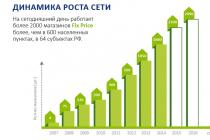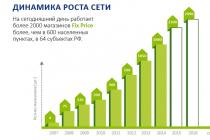Absolutely every company needs timely cleaning of the premises. It must be carried out by a certain employee, for whom the authorities have developed a cleaning rate for one cleaner.
A person who is ignorant or has little idea about the cleaning procedure will decide that there is nothing difficult in hiring and issuing a job front for a cleaner. However, in fact, there are special rules for cleaning, selection of equipment, which every employer must adhere to. Each item of these rules is supported by its legislative document.
List of premises required for cleaning
Cleaning is professional cleaning services. Each person organizes cleanliness in his house based on his ideas. But there is such a category of people who absolutely do not want to do this, it is difficult or simply there is no time.
For such people, it is much easier to pay for perfect cleaning than to do it yourself, armed with rags and a vacuum cleaner. But there are also office buildings, huge shopping centers, vast production shops, schools, kindergartens and much more - who cleans these rooms? Of course, these are professional cleaners.
Cleaning of premises at a manufacturing enterprise should be carried out in areas such as:
- Places for employees to work and rest.
- Toilets and shower rooms.
- Places for eating or preparing food.
- Warehouses.
Each production facility described above must be sanitized and washed floors and walls. And such areas as the hall and steps, elevator cabins, basements and attics should be subjected to special treatment with antiseptic substances.
Who should do the cleaning?

In some companies or in production, the cleaning of the premises is entrusted to the workers themselves. However, as sad experience showed, they could not cope with their additional responsibilities qualitatively, in connection with which they were forced to work in unsanitary conditions.
That's why every organization needs a cleaner office space. Only he knows all the subtleties of cleaning and is able to achieve complete cleanliness in all rooms. The main thing for the authorities is to provide the cleaner with everything necessary.
How much should you pay a cleaning lady?

Every job should be well paid. Thus, the work of a cleaner should have decent pay.
In Art. 133 Labor Code Russian Federation said that wage each employee who has not missed a single working day and who has fully completed all the work assigned to him should not be less than the low rate on wages. Thus, an office cleaner should be paid more than the minimum wage. In the case of an increase in the service area, the salary must also be increased. However, this additional payment does not have to be higher than the minimum wage. At the same time, it does not matter at all how much additional space the cleaner has taken on.
How much inventory and detergents should be spent?

To prevent theft, as well as the correct distribution of cleaning costs, a certain amount of materials and detergents must be spent on each office space.
There are both standard consumption rates and individual ones. The latter are applied depending on indicators such as the area cleaned and the total number of employees. For typical developed their own data. The following types of inventory fall under the norms for the consumption of materials:
- Toilet and laundry soap.
- Laundry powder.
- polishing agents.
- Buckets.
- Various types of brushes.
- Brushes for cleaning toilet bowls.
- Rags for wiping dust, furniture and more.
According to typical calculations, detergents are used in full accordance with the number of working hours. Inventory, in turn, is counted in pieces per person for a certain period of time. Thus, following the initial data, cleaning of industrial premises with an area of 400 square meters will be carried out with the following amount of detergents and equipment:
- Washing powder - 1 kilogram.
- Toilet soap - 200 grams.
- Laundry soap - 400 grams.
- Broom - 2 units for 30 days.
- Brushes - 1 unit for 60 days.
- Scoops - 1 unit for six months.
- Rubber gloves - 1 unit for 30 days.
All these data should be reflected not only in standard contract, which is concluded when a cleaner is employed in an office or in production, but also in a memo for this employee.
What factors can change cleaning rates?

Despite general provisions and the Labor Code, there are factors with which the rate of cleaning of premises per cleaner changes. These include:
- For production: total area harvested, mass of waste and litter, type of production.
- For service and amenity premises: type of premises, number of employees involved.
Thus, along with the change in cleaning standards, the wages of employees also change.
How are cleaning rates calculated?
The area norms for a cleaner in educational institutions and in production are determined by the total area of cleaning and are set in minutes per 1 square of the cleaned space. However, they can change in the presence of different types of litter and waste, as well as the use of modern means, equipment and the latest means of organizing work.
For a better understanding, as well as the most correct calculation of working hours and payroll, you should know that absolutely all enterprises are divided into the following groups:
- Waste-free. The cleanest production, cleaning in which is carried out in accordance with the regulations.
- Production that produces wood waste. This and all subsequent types of premises are cleaned at higher rates.
- Production that gives liquid, light and free-flowing types of litter.
- An enterprise that produces metal residues.
- An enterprise that produces refractory waste, peat and coal residues.
Based on this list, the rate of cleaning the premises per minute will be the following indicators:
- For industries that do not produce waste. The cleaning rate for one cleaning lady per 1 square of working space should be about 0.3 minutes - when organizing dry cleaning of the floor - and 0.7 minutes - when performing wet cleaning using detergent solutions.
- For industries with different types of waste. For them, the norms will directly depend on the weight of the waste placed on 100 squares of the working space. In general, these indicators will have the following value: with 50 kilograms of waste, dry cleaning is carried out within 0.16 minutes, and with 168 kilograms - 0.30 minutes.
How often are rooms cleaned?

When a cleaner gets a job in an office or other office space, an agreement is concluded between her and the director. Along with listing the main responsibilities and working hours, it also indicates how often the cleaning lady needs to carry out each type of cleaning. However, there are also some exceptions. So, for example, when wet cleaning the floor more often than stipulated by the contract, other types of cleaning can be performed partially.
The Labor Code of the Russian Federation provides standard cleaning standards that should be followed when entering into a standard contract for cleaning educational and office premises. According to them, different kinds cleaning should be carried out at the following intervals:
- Cleaning the floor with a vacuum cleaner or broom. Should be carried out every day for several times or as needed.
- Wiping floors, shelves, walls. It is carried out once every 7 days, provided that the room is slightly polluted.
- Wet floor cleaning. Should be done once a month. However this duty applies to office space only. In all others, washing should be done every two days.
- Furniture cleaning. It is carried out every day one time.
- Washing furniture. Cleaning standards in this case should not exceed once a week.
- Wet cleaning of heating systems. It is held 4 times in 1 year.
- Cleaning window openings and window sills. It is carried out once in 7 days.
- Dry cleaning of the ceiling. Cleaning is done twice a year.
- Washing windows. It is carried out twice a year.
The cleaning organization uses a special approach: the order is fixed by the regulations, everyone knows their own official duties and your area where the work will be carried out. As a result, the work is carried out very quickly, all surfaces shine with amazing cleanliness, and the aroma of freshness soars in the air, which cannot be expressed in words.
Professional cleaning is especially important for cleaning large premises: shopping centers, entertainment complexes, industrial or office buildings. Here, cleaning service personnel expect not only large volumes of work, but also specific pollution, high ceilings, huge windows and other difficulties.
What job responsibilities are included in the calculation norms?
All space norms for a cleaner are calculated taking into account the time it takes to clean a particular room. In general, all work functions are divided into two parts: the main types of cleaning and secondary ones. The main ones are:
- Dry and wet floor cleaning.
- Removal of debris from the work area.
- Cleaning boxes, bags and other types of containers.
- Detergent replacement.
- Wet and dry cleaning of panels, window sills, heating radiators and walls.
- The distribution of rubbish and its removal to a specially designated place.
- Cleaning sinks, faucets and toilets with showers.
The secondary types of cleaning include the following types of work:
- Selection and processing of materials for cleaning and their transfer to the cleaning site.
- Workplace cleaning.
- Reception and delivery of shifts.
- Carrying out easy installation of materials.
The main functions are included in the salary account and must be carried out strictly on time. Secondary types are not included in the calculation of working hours, and therefore are not taken into account in wages.
Rules for calculating the number of cleaners
Quite often, employers are faced with such a situation as an overload of cleaners in one place and a lack of them in another. In order not to encounter such a situation, it is necessary to correctly calculate the number of people per room and, in connection with these calculations, distribute workers.
The garbage collected during the cleaning is taken out to specially designated places.
When cleaning the premises, manual cleaning products are used. When cleaning carpets, paths, soft sofas, armchairs and chairs, vacuum cleaners are used.
The service standards for office cleaners have been developed differently depending on the purpose of the premises and their congestion.
The norms are established on the basis of intersectoral time standards for cleaning office and cultural and community premises (M .: NII Labor, 1983), taking into account the list of works and the frequency of their implementation, which has developed during the maintenance of most of the surveyed buildings and is given in Appendix 2. In the event that the frequency of performing cleaning work on the ground is different, then the service standards are recalculated accordingly. The frequency of cleaning operations may vary depending on local conditions and be established by the relevant competent authorities.
Service rates (N_o) are calculated by the formula:
T_sm - shift fund of working time;
T_no - the norm of time for servicing a unit of volume of basic work.
The rate of service time (T_no) is determined by the formula:
T_no \u003d (T_n1 + T_n2 + . + T_nn) x K,
where T_n1, T_n2 and T_nn are the time spent on the performance of individual harvesting operations, and which is determined by the formula:
t is the operating time standard per unit of work;
V is the number of units of work of the same name at the serviced facility;
q is the frequency of this work per shift;
K is a coefficient that takes into account the time spent on maintaining the workplace, as well as rest and personal needs, which is determined by the formula:
a_1 - time to service the workplace in% of the operational time;
a_2 - time for rest and personal needs in% of the operational time.
The calculation of the attendance number (N_ya) of office cleaners is carried out as follows:
N_1, N_2, N_n - the volume of harvested areas of various premises, for which different standards are established;
Н_о1, Н_о2, Н_оn — service norms.
An example of calculating the number of workers required to service the building of the ministry
Determine the number service personnel ministry buildings.
The building of the ministry, which has one main entrance, employs 536 people. The total area of the premises (sq. m) - 2535, including: the area of office premises - 1450 (with a occupancy factor from 0.2 to 0.4), the area of the meeting room - 360 (with a occupancy factor of 0.6), the area of corridors - 405 (with a occupancy factor of up to 0.2), the area of the lobby - 80 (with a occupancy factor of 0.3), the area of men's toilets - 40, women's - 50, the area of stairs - 150. The building has three elevators for independent use (two elevators located side by side and one separately). The building is equipped with natural ventilation, the wardrobe is designed for 630 places and works in one shift. The number of furniture units is 2650. The coefficient of planned absenteeism (K_n) during vacations, due to illness, etc. for all professions 1.1 (accepted conditionally) and determined by the formula:
Payroll (N_sp) is determined by the formula:
Calculation of the number of workers by profession:
According to the table 1 based on the number of places in the cloakroom (630), we determine the normative number of cloakroom attendants per shift (H_ya). For this building, it is 2.02 people.
List number of cloakroom attendants:
N_sp \u003d 2.02 x 1.1 \u003d 2.22
workers involved in the maintenance and repair of engineering equipment of the building
According to the table 2 based on the number of employees (536 people) and total area buildings (2535 sq. m.) we determine the normative number of workers per day (H_ya). For this building, it will be 3.01 people.
The list number of workers engaged in the maintenance and repair of engineering equipment:
N_sp \u003d 3.01 x 1.1 \u003d 3.31
According to the table 3 Based on the number of employees (536 people) and the number of pieces of furniture (2650), we determine the standard attendance number of carpenters per day (N_ya). For this building, it will be 2.01 people.
List number of carpenters:
N_sp \u003d 2.01 x 1.1 \u003d 2.21
Based on the fact that the building of the ministry has permission for the independent use of elevators, the standard for the attendance number of elevator operators per shift (H_ya) for this building, which has two elevators (located side by side) and one (separately standing), is 2 people.
List number of lifters when working in one shift:
H_sp \u003d 2 x 1.1 \u003d 2.2
Based on the number of posts in the building (one), we determine the standard of attendance per shift (H_ya), which for this building will be 1 person.
List number of watchmen when working in three shifts:
H_sp \u003d 1 x 3 \u003d 1.1
office cleaners
Based on the indicated areas of the premises of the building according to Table. 4 and 5, substituting the numerical values, we determine the standard attendance number of office cleaners.
N_sp \u003d 4.6 x 1.1 \u003d 5.06
Notes: 1. The following premises are classified as office premises: employee work rooms, executive offices, reception rooms, public organizations, premises for waiting and receiving visitors, medical stations.
2. The coefficient of occupancy is determined by the ratio of the area (sq. M) occupied by objects located in the premises of one purpose to the entire area of this premises.
3. The service standards do not take into account the cleaning of carpets, carpet paths and upholstered furniture, because the frequency of their cleaning is established locally in accordance with local organizational and technical conditions.
The following time standards are set for cleaning with a vacuum cleaner: 1 sq. m of carpet (carpet track) - 0.36 min., for one easy chair - 0.68, for one soft sofa - 0.75 min.
On the basis of these time norms (taking into account the frequency established on site), the time spent on these works is determined, and the service norms are recalculated accordingly.
4. When calculating the maintenance standards for toilets, the following number of sanitary equipment was adopted: for women's toilets - three toilet bowls and two sinks, for men's toilets - three toilet bowls, three urinals and two sinks. With an increase in the number of equipment by one item, the service rate is multiplied by a factor of 0.98; when the number of equipment decreases by one item, the service rate is multiplied by a factor of 1.02.


Date of registration: 20.10.2010
What area should be cleaned by one cleaner according to existing standards?
Labor standards, including production standards (area harvested), are established by local regulations the employer, taken with the opinion of the representative body of employees.
The norms of the area to be harvested are the norms of labor. According to the first part of Art. 160 of the Labor Code of the Russian Federation, labor standards are established in accordance with the achieved level of technology, technology, organization of production and labor.
law on the minimum wage + Labor Code of the Russian Federation.
Sincerely, Julia
Date of registration: 20.10.2010
how the employer and the employee agree on what area to clean, at the conclusion of the TD, so much will she clean.
Date of registration: 20.10.2010
Read your pay statement.
Date of registration: 20.10.2010
Date of registration: 20.10.2010
Date of registration: 20.10.2010
> Hello, I work as a cleaner in a factory
> office space, my area is offices,
> corridors, locker room stairs (and what
> attached), volume of area to be cleaned
> is 1478 m2 - am I being paid fairly
> labor in the amount of 1.5 rates? If it's daily
> cleaning the entire territory?
Date of registration: 20.10.2010
in accordance with the regulation on wages.
the scope of work is determined by the job description.
Date of registration: 20.10.2010
Date of registration: 20.10.2010
- 1 of 3
Norm of office cleaning per cleaning lady


What are the cleaning standards (how many square meters) of production areas for one cleaner? And what documents govern these rules?
There is no single mandatory document that establishes the norms for cleaning production areas. The documents below are advisory in nature and can be used as a basis for the development of labor rationing systems established in organizations.
Cleaning standards are set out in the documents below. These documents are advisory in nature and can be used as a basis for the development of labor rationing systems established in organizations. In accordance with Article 159 of the Labor Code of the Russian Federation, labor rationing systems are determined by the employer, taking into account the opinion of the representative body of employees, or are established by a collective agreement. For homogeneous work, standard (intersectoral, sectoral, professional and other) labor standards can be developed and established in accordance with the Rules for the development and approval of standard labor standards, approved by Decree of the Government of the Russian Federation of November 11, 2002 N 804.
In section 2.1 Labor standards for auxiliary work in the housing and communal services, developed by the Center for Rationing and information systems in the housing and communal services (TsNIS) of the Gosstroy of Russia in 2000, the service standards for cleaning are set differentiated depending on the type of waste being removed. With this in mind, production facilities are divided into five groups:
Group 1 - premises of industries that do not have waste;
group 2 - premises of industries that produce wood waste;
group 3 - premises of industries with lightweight, liquid, bulk, small-sized industrial waste;
group 4 - premises of industries that produce metal waste in the form of shavings, cuttings, scraps, etc .;
Group 5 - premises of industries that produce casting waste, refractory waste, coal and peat dust and do not require thorough cleaning.
The time standards are set in man-minutes and man-hours per unit of work for performers, the composition of which is given in each paragraph of the normative part of the collection.
Service standards are set for work performed by one performer within work shift with duration working week 40 hours and compliance with others legislative norms labor protection with the most complete and rational use working time. The maintenance rates are calculated taking into account the width of the passages between the equipment over 1 m. If the width of these passages is up to 1 m, a correction factor of 0.85 is applied to the maintenance rates. Service standards are set taking into account one-time cleaning during the shift. If cleaning must be done more than once during a shift, the service rate and service time rate are adjusted taking into account correction factors.
The headcount standards provide for the undisclosed number of employees. For determining payroll it is necessary to use the coefficient of planned absenteeism, taking into account annual leave, absenteeism at work, issued by disability certificates, absenteeism in connection with the performance of state or public duties, etc.
The document also provides an example of calculating the number of cleaners industrial premises.
For example, initial data:
4015 sq. m - premises in industries that do not have waste;
765 sq. m - premises in industries that produce lightweight, liquid, bulk, small-sized industrial waste, the mass of waste is up to 5 kg.
2. Coefficient of planned absenteeism - 1.12.
N paragraph on the collection
Clean-up area, sq. m
Service rate, sq. m
Normative number, pers. (group 3/group 4)
Sweeping the floor without pre-moistening
Washing the floor with detergents
Sweeping the floor without first moistening it with the collection of waste from workplaces
Washing the floor with detergents without collecting waste from workplaces
The list number of industrial premises cleaners is: 9.5 x 1.12 = 10.6
In the resolution of the State Committee for Labor of the USSR, the Secretariat of the All-Union Central Council of Trade Unions dated September 18, 1985 N 321 / 19-28 “On Approval of Standard Service Standards for Cleaners of Industrial Premises industrial enterprises» contains service standards and service time standards for cleaning industrial premises.
In accordance with clause 1.4 of this resolution, service standards are established for one contractor per shift in sq. m of the area to be cleaned, taking into account manual work with a shift duration of 8 hours; Service times are given in minutes per square meter. m. Service standards for cleaning industrial premises are set differentially depending on the type of waste being removed. With this in mind, production facilities are divided into five groups (similar to the groups established by the Labor Standards for auxiliary work in housing and communal services).
Examples of calculation of service rates are also given.
Initial data. The room of the 3rd group, the coefficient of the shifting frequency of sweeping the floor - 1.4 and washing - 1.0. The mass of waste removed when sweeping the floor from 100 per shift is 8 kg. The duration of the shift is 8 hours.
Calculation. On map 3 we find the norm of time for sweeping the floor - 0.284 minutes per 1 (N 10).
Hello Alikhan.
At present, according to the current legislation, the production standards are established by the employer's local regulations (regulations on remuneration, job duties, orders).
Are there any standard labor standards for office cleaners in educational organization, i.e. how many square meters should the office cleaner clean?
There are no uniform standard labor standards for work performed by a cleaner of office premises in an educational organization, which in this case could be guided by the employer, does not exist. Labor standards, including production standards (area to be harvested), are established by local regulations of the employer, adopted taking into account the opinion of the representative body of employees.
The norms of the area to be harvested are the norms of labor.
According to the first part of Art. 160 of the Labor Code of the Russian Federation, labor standards are established in accordance with the achieved level of technology, technology, organization of production and labor.
From Art. 159 of the Labor Code of the Russian Federation it follows that the system of labor rationing is determined by the employer, taking into account the opinion of the representative body of workers, or is established by a collective agreement.
The state must assist in systemic organization regulation of labor.
To this end, Art. 161 of the Labor Code of the Russian Federation provides for the possibility of developing and approving standard (intersectoral, sectoral, professional) labor standards for homogeneous works that are advisory in nature.
However, at present, there are no uniform standard labor standards for work performed by a cleaner of office premises in an educational organization, which in this case could be guided by the employer, do not exist.
To determine the labor standards for cleaning office premises, the Time Standards for cleaning office and cultural and amenity premises, approved by the Decree of the USSR State Labor Committee of December 29, 1990 N 469 (hereinafter referred to as the Standards), can be used.
As stated in the preamble this document, the standards are recommended (and not mandatory) for use in institutions, organizations and enterprises, regardless of departmental subordination.
Therefore, the Standards can be applied adjusted for the current level of technology, technology, organization of production and labor.
Thus, in this case, the employer has the right to independently develop a system for rationing the work of office cleaners
When adopting a local regulatory act that introduces, replaces or revises labor standards, it is necessary to take into account the opinion of the representative body of workers.
Employees must be notified of the introduction of labor standards no later than two months in advance (Article 162 of the Labor Code of the Russian Federation).
LABOR CODE
How much work should a technician do?
“How much work does a technical employee have to do in order to be paid the minimum wage? Does the number of square meters count? How many times should a school be wet cleaned? The fact is that we do almost the same amount of work, but we are paid differently: some - more, others - less. During the school holidays, we, technical employees, will paint, bleach and do the same amount of work, but the pay will remain the same - as during the school period. But that's unfair. Are we being paid correctly? Where to look for justice? O. I. DRYABINA (Kursk region).
The deputy head answers State Inspectorate labor in the Kursk region Tatyana SEMENIHINA: “According to the requirements of Article 133 of the Labor Code of the Russian Federation, the monthly salary of an employee who has fully worked out the norm of working hours during this period and fulfilled labor standards ( labor obligations), cannot be lower minimum size wages. Thus, if you have worked the norm of working hours, the employer is obliged to calculate and pay wages not lower than the established minimum wage.
The norm of the area to be harvested was provided for in the Model states of elementary, incomplete secondary and secondary general education schools, approved by Order of the USSR Ministry of December 31, 1986 No. 264. According to paragraph 14 of the Model States, the position of office cleaner was established at the rate of 0.5 units.
The rate of the area to be harvested per 1 bet.
positions for the school.
In general education schools where students are taught in the second, third shifts, and there are also groups extended day, the positions of office cleaner are additionally established at the rate of: in schools working in two shifts - 0.25 units. posts for every 250 sq. meters, and in schools that work more than two shifts or have extended day groups - 0.5 units. posts for every 250 sq. m of cleanable area used by students of these shifts and after-school groups.
Thus, in fact, the norm of the area to be cleaned was set at 500 square meters for the salary rate of the office cleaner.
However, the Model states became invalid in the territory of the Russian Federation in connection with the publication of the Order of the Ministry of Education and Science of the Russian Federation No. 177 “On the recognition of departmental regulatory legal acts as not subject to application in the territory of the Russian Federation”.
At the same time, Article 153 of the Federal Law of August 22, 2004 No. 122-FZ “On Amending the Legislative Acts of the Russian Federation and Recognizing Some Legislative Acts of the Russian Federation as Invalid in Connection with the Adoption of the Federal Laws “On Amendments and Additions to the federal law"About general principles organizations of legislative (representative) and executive bodies state power subjects of the Russian Federation” and “On the general principles of organization local government in the Russian Federation” states that when state authorities of the constituent entities of the Russian Federation and local authorities issue regulatory legal acts, the following condition must be met: the newly established amounts and conditions of remuneration (including allowances and surcharges), the amounts and conditions for the payment of benefits (including one-time payments) and other types of social payments, guarantees and compensations certain categories citizens in cash cannot be lower than the size and terms of remuneration (including allowances and additional payments), the size and terms of payment of benefits (including lump sum) and other types of social payments, guarantees and compensation in cash provided to the relevant categories of citizens, according to as of December 31, 2004.
Thus, it follows from the provisions of the federal legislation that the norm of a cleaned area of 500 square meters for the salary rate of a cleaner of office premises should be maintained when local governments adopt regulatory legal acts regulating wages in municipal educational institutions.
During the period of epidemiological well-being in institutions, daily wet cleaning of the premises is carried out using soda, soap or synthetic detergents.
Cleaning of classrooms and other educational and educational premises is carried out after the end of the lessons with open windows or transoms.
If the school has two shifts, cleaning is done twice. They wash the floors, wipe the places where dust accumulates (windowsills, radiators, etc.). Once a month, a general cleaning is carried out using not only detergents, but also disinfectants that are allowed in the prescribed manner. These norms are established in accordance with the Sanitary and Epidemiological Rules SP 2.4.3.-782-99 9, which entered into force on January 1, 2000.
According to the requirements of Article 60.2 of the Labor Code of the Russian Federation, it is provided that, with the written consent of the employee, he may be entrusted with the performance during the established duration of the working day (shift), along with the work specified in the employment contract, additional work in another or the same profession (position) for additional payment(Article 151 of this Code). Thus, if your job responsibilities do not include painting and whitewashing, you may not give your consent to the performance of these works.
In order to answer the question of the correctness of wages, it is necessary to check compliance labor law In the organisation. We recommend that you contact the State Labor Inspectorate in the Kursk region in person at the address: Kursk, st. Zelenaya, 30. Or send a written application addressed to the acting head, indicating the name of the organization, contact phone number and address.
Read the latest "Friend for a friend" news on social networks:
VKontakte, Odnoklassniki, Facebook, Twitter, Instagram.
Reader Reviews (4)
Does a school worker have to perform specialized work such as: Overhaul of classrooms, welding, replacement of floors, installation of suspended ceilings, etc.
Hello! Please answer the question: how many square meters per worker? How much should you pay for a part time job? We have six working days of seven hours. employment contract it is written that the duration of working time is 36 hours. And how much% should be paid for the second shift.
Do the duties of those employees include duty, be responsible for the safety of school property. Work on weekends.
Hello. Please answer the question. How many square meters per worker? How much should you pay for a part time job? Responsible for maintaining school property. Work weekends.
She worked at the N-Biryukovskaya 8-year-old school for 38 years from 1950 to 1989. Our duties included everything: 1. harvesting firewood (cutting it into pieces) 2 Smearing the building from the outside, and these are two large buildings, they kneaded the clay with their feet. 3 In the summer, mowing territory and it is 60 acres. 4 Water was not carried at school for 1.5 km 5. Coal was brought by technicians brought into the barn. In the summer, they did a complete internal repair. As a result, in 1991 they gave land shares, the director of the school included everyone in the list except me. I didn’t know what she did to me, she deprived me of everything. That’s how labor is valued in Russia. And I want everyone to know how valiant school principals use our work
Any service and industrial premises are subject to pollution to some extent, and it is impossible to avoid this. Working conditions have a great impact not only on the health and safety of employees, but also on the efficiency of production, as well as the quality and safety of stored goods. Therefore, every employer must ensure that his premises are constantly in perfect order and carry out timely cleaning in them. Although at first glance this procedure looks quite simple, in fact there are different consumption rates of detergents for cleaning rooms, areas per cleaner, and there are also a number of rules that are regulated by relevant documents.
Which areas need to be cleaned
Cleaning of industrial premises, the norms for which will be given below, should be carried out for all premises of any type of enterprise:
- working areas and rest rooms;
- bathrooms and showers;
- kitchens and dining rooms;
- warehouse premises.
Also, one should not forget about the halls of buildings, flights of stairs, elevators, basements and attics, which must also undergo special processing.
Large room cleaning

If the company is engaged in the production food products, then in addition to regular cleaning, regular disinfection of all work surfaces, as well as floors and walls, must be carried out, which will ensure the necessary conditions to store goods and eliminate the possibility of pathogenic bacteria and fungi.
The use of scrubbers for industrial premises

Who is responsible for cleaning the premises?
Of course, you can entrust the entire process of servicing work areas to employees of the enterprise, but it is much better to use the services specialized company. This is due to the fact that they have all the necessary knowledge in this area, have modern equipment and high-quality detergents that will allow you to carry out the procedure with maximum efficiency. Only in this case, all the rules for cleaning office premises will be fully observed, and the premises will be kept clean.
Cleaning concrete floors in the workshop

Consumption rates for detergents and materials
In order to streamline the consumption of materials and tools, standard norms for the consumption of detergents for cleaning industrial and office premises are used. For each enterprise, they are calculated individually in accordance with its area and the number of workers. Regulated materials include toilet and laundry soap, washing powder, polish, buckets, brushes, ruffs, cleaning cloth and many others.
Cleaning tools

The consumption of detergents is determined in accordance with the scope of work, while the quantity necessary tools calculated in units per cleaner for a certain period of time.
Consumption rates of detergents for cleaning industrial premises with an area of 400 sq. m make up: 1 kg washing powder, 0.2 kg toilet soap, 0.4 kg laundry soap; materials: brooms - 2 pcs. for 1 month, floor brushes - 1 pc. for 2 months, scoops for garbage - 1 pc. for 6 months, rubber gloves - 1 pc. for 1 month etc.
Professionals must have a large assortment facilities and equipment

How are room service standards determined?
Cleaning rates per cleaning lady are set taking into account the area cleaned per shift and are expressed in minutes per square meter. They depend on the type of waste being removed, and can be adjusted taking into account the use of progressive methods of organizing work, modern materials and fixtures.
All enterprises are divided into several categories depending on the type of waste, in accordance with which the norms for cleaning industrial premises per person are calculated. These are productions:
- having no waste;
- giving wood waste;
- giving liquid, lightweight and bulk waste;
- with metal waste;
- with refractory waste, peat and coal dust.
The frequency of cleaning is determined by the employer. If it is performed more than once per shift, then all subsequent procedures may not be carried out in full.
Special plates, required attribute

Cleaning rates for industrial premises per person fluctuate in a very wide range. For non-waste production per 1 sq. m they range from 0.2 min for sweeping to 0.6 min for washing the floor using detergents. For other enterprises, these indicators depend on the mass of garbage removed per 100 square meters.
Cleaning of office and industrial premises
So, for the 5th group of premises with a mass of removed waste up to 50 kg, the norms for cleaning office premises by sweeping without moisture are from 0.15 min, and with a mass of 114 to 170 kg - 0.31 min.
Mandatory work schedule

What functions of workers are taken into account when calculating service rates
Cleaning rates per cleaner are calculated taking into account the time spent on the performance of basic and additional functions.
The main ones include sweeping and washing floors, collecting waste near workplaces, cleaning boxes, bags and other containers, changing the washing solution, wiping and sweeping panels, window sills, heating pipes, walls; garbage sorting and delivery to the designated place, cleaning of sinks, taps and bathrooms.
Additional functions that take into account cleaning standards for office space for cleaners are the preparation of materials for maintenance and their delivery to the place from storage and back, cleaning the workplace of the cleaner, receiving and handing over shifts, carrying out light repairs of inventory, and a number of others.
Special trolley for inventory

How to calculate the required number of cleaners for a room
Cleaning rates for office cleaners allow employers to calculate how many staff will be required to service industrial buildings of a given area. They are not strictly provided for by the current legislation and are determined in accordance with the Decree of the State Labor Committee of the USSR and the All-Union Central Council of Trade Unions approved in 1985. According to these data, they can be from 400 sq. m to 1000 sq. m per person.
Cleaning rates for office cleaners are set depending on their purpose, congestion and type of waste to be removed.
For example, with a minimum occupancy of an office space, the service rate per shift is 560 sq.m, with a maximum of 320 sq.m, while for spacious, uncluttered lobbies, a rate of up to 1100 sq.m is allowed. m. For bathrooms, the norms for cleaning rooms per cleaner are lower: for toilets - 185-200 sq.m per shift, for showers - 300 sq.m. m.
Cleaning of industrial premises

Some cleaning rules
There are certain office cleaning rules that must be taken into account when servicing. For each zone that will be processed by the cleaner, a cleanliness map should be developed, which indicates the route of work, the boundaries of the area, the frequency of cleaning, the types of work and the means used for them, and the time to complete these works.
Facilities maintenance supplies should be stored in special place and delivered by the cleaner to the work area independently. After all procedures, they must be taken back to storage.
The territory of work, which is determined by the cleaning standards for one cleaner, is processed by dividing the total area into sections of about 10 square meters. m. Garbage is collected separately and folded into a container specially designed for this, moved along the edge of this area. With wet cleaning, the cleaning solution and water are replaced as they become dirty.
Go to the section Cleaning and additional services
How many meters and in what terms should an average Russian cleaner clean?
Back in 2009, the user bukh2007 asked a question on the Clerk.Ru forum:
“No one knows at least some approximate norms (maybe from Soviet times) how much space to assign to one cleaner?
We currently have about 300 sq. m removes.
Norm of office cleaning per cleaning lady
Or rather, only washes the floors. It turns out a vicious circle. She believes that she is paid very little, and for such money and such cleaning - we should already be happy. The management believes that she does not clean well, and for such cleaning and such money - she is happy.”
The topic “Norms for a cleaner” for these years has collected several dozen comments and has acquired additional questions, such as: should a cleaner clean windows and walls, should she be satisfied with it and should she raise her salary.
Clerk.Ru decided to sort out the labor standards of one of the most necessary staff positions in any organization and turned to the head of a cleaning company for a comment.
“There is no modern regulatory legal framework for regulating the work of junior service personnel,” comments Natalya Borisovna Litvinenko, CEO cleaning LLC "Monika Cleaning". - Therefore, a number of regulations developed in the 90s continue to be used in practice.
1. In accordance with the Decree of the State Committee of Labor dated December 29, 1990 N 469 “On approval of time standards for cleaning service and cultural and amenity premises”, the standard time for washing the floor is from 0.4 - 0.689 min / sq. M (depends on the coefficient of occupancy of the premises) .
That is, a floor of 300 square meters with an average overcrowding of the room should be washed by a cleaner in 172.2 minutes.
(300 * 0.574) \u003d 172.2 minutes \u003d 2 hours.
2. As for the amount of remuneration for the office cleaner, according to Art. 133 of the Labor Code of the Russian Federation, the monthly salary of an employee who has fully worked out the norm of working hours for this period and fulfilled labor standards (labor duties) cannot be lower than the minimum wage.
3. If the duties of a cleaning lady do not include other duties, except for washing the floor, then in your case she works at about 0.3-0.4 rates (salary is not lower than 0.3-0.4 of the minimum wage).
Thus, labor standards, enshrined in legislation, do not currently exist for cleaners. The organization has the right to determine how much to pay an employee and how much work he must perform. These agreements must be enshrined in the employment contract, and also spelled out in job description, and the decision whether to agree to the proposed conditions remains with the employee.
http://www.clerk.ru/
"STANDARDS FOR THE NUMBER OF WORKERS ENGAGED IN THE MAINTENANCE OF PUBLIC BUILDINGS (MANAGEMENT BUILDINGS AND BUILDINGS OF DESIGN AND DESIGN ORGANIZATIONS)" (approved by the State Committee for Labor of the USSR)
2.6. Service standards for office cleaners
Labour Organization
The job of a janitor is to clean the premises of the buildings. To maintain cleanliness in the premises, the following types of cleaning are performed: dry and wet sweeping and mopping, wet wiping and washing walls, window frames and glass, door blocks and other works.
Necessary cleaning tools and accessories - a broom, a brush, a rag, a bucket, a scoop, detergents - at the beginning of the shift, the cleaner delivers to the place of work and at the end of cleaning to the place of storage.
The detergent solution is prepared by the cleaner. Water and cleaning solution are periodically changed.
When washing the floor, furniture (except for permanently installed furniture) should be moved away, the floor washed and the furniture put back in place.
The garbage collected during the cleaning is taken out to specially designated places.
When cleaning the premises, manual cleaning products are used. When cleaning carpets, paths, soft sofas, armchairs and chairs, vacuum cleaners are used.
Calculation of service rates
The service standards for office cleaners have been developed differently depending on the purpose of the premises and their congestion.
The norms are established on the basis of intersectoral time standards for cleaning office and cultural and community premises (M .: NII Labor, 1983), taking into account the list of works and the frequency of their implementation, which has developed during the maintenance of most of the surveyed buildings and is given in Appendix 2. In the event that the frequency of performing cleaning work on the ground is different, then the service standards are recalculated accordingly. The frequency of cleaning operations may vary depending on local conditions and be established by the relevant competent authorities.
Service rates (N_o) are calculated by the formula:
T_sm - shift fund of working time;
T_no - the norm of time for servicing a unit of volume of basic work.
The rate of service time (T_no) is determined by the formula:
T_no = (T_n1 + T_n2 + ... + T_nn) x K,
where T_n1, T_n2 and T_nn are the time spent on the performance of individual harvesting operations, and which is determined by the formula:
T_n1 \u003d t x V x q,
t is the operating time standard per unit of work;
V is the number of units of work of the same name at the serviced facility;
q is the frequency of this work per shift;
K is a coefficient that takes into account the time spent on maintaining the workplace, as well as rest and personal needs, which is determined by the formula:
a_1 - time to service the workplace in% of the operational time;
a_2 - time for rest and personal needs in% of the operational time.
The calculation of the attendance number (N_ya) of office cleaners is carried out as follows:
| H_ya = | N_1 | + | N_2 | + | N_3 | + … | N_n | , |
| H_o1 | H_o2 | H_o3 | H_on |
N_1, N_2, N_n - the volume of harvested areas of various premises, for which different standards are established;
Н_о1, Н_о2, Н_оn — service norms.
An example of calculating the number of workers required to service the building of the ministry
Determine the number of service personnel of the building of the ministry.
Initial data
The building of the ministry, which has one main entrance, employs 536 people. The total area of the premises (sq. m) - 2535, including: the area of office premises - 1450 (with a occupancy factor from 0.2 to 0.4), the area of the meeting room - 360 (with a occupancy factor of 0.6), the area of corridors - 405 (with a occupancy factor of up to 0.2), the area of the lobby - 80 (with a occupancy factor of 0.3), the area of men's toilets - 40, women's - 50, the area of stairs - 150. The building has three elevators for independent use (two elevators located side by side and one separately). The building is equipped with natural ventilation, the wardrobe is designed for 630 places and works in one shift. The number of furniture units is 2650. The coefficient of planned absenteeism (K_n) during vacations, due to illness, etc. for all professions 1.1 (accepted conditionally) and determined by the formula:
Payroll (N_sp) is determined by the formula:
Ch_sp = Ch_ya x K_n.
Calculation of the number of workers by profession:
cloakroom attendants
According to the table 1 based on the number of places in the cloakroom (630), we determine the normative number of cloakroom attendants per shift (H_ya). For this building, it is 2.02 people.
List number of cloakroom attendants:
N_sp \u003d 2.02 x 1.1 \u003d 2.22 ~ 2 people.
workers involved in the maintenance and repair of engineering equipment of the building
According to the table 2 Based on the number of employees (536 people) and the total area of the building (2535 sq. M.), we determine the standard attendance number of workers per day (H_ya). For this building, it will be 3.01 people.
The list number of workers engaged in the maintenance and repair of engineering equipment:
N_sp \u003d 3.01 x 1.1 \u003d 3.31 ~ 3 people.
carpenters
According to the table 3 Based on the number of employees (536 people) and the number of pieces of furniture (2650), we determine the standard attendance number of carpenters per day (N_ya). For this building, it will be 2.01 people.
List number of carpenters:
N_sp \u003d 2.01 x 1.1 \u003d 2.21 ~ 2 people.
lifters
Based on the fact that the building of the ministry has permission for the independent use of elevators, the standard for the attendance number of elevator operators per shift (H_ya) for this building, which has two elevators (located side by side) and one (separately standing), is 2 people.
List number of lifters when working in one shift:
H_sp \u003d 2 x 1.1 \u003d 2.2 ~ 2 people.
watchmen
Based on the number of posts in the building (one), we determine the standard of attendance per shift (H_ya), which for this building will be 1 person.
List number of watchmen when working in three shifts:
N_sp \u003d 1 x 3 \u003d 1.1 ~ 3 people.
office cleaners
Based on the indicated areas of the premises of the building according to Table.
4 and 5, substituting the numerical values, we determine the standard attendance number of office cleaners.
| H_ya = | 1450 | + | 360 | + | 405 | + | 80 | 40 | 50 | 150 | = 4,6. |
| 480 | 770 | 1100 | 960 | 185 | 200 | 730 |
List number:
N_sp \u003d 4.6 x 1.1 \u003d 5.06 ~ 5 people.
Table 4
Table 5
Notes: 1. The following premises are classified as office premises: employee work rooms, executive offices, reception rooms, premises of public organizations, rooms for waiting and receiving visitors, medical stations.
2. The coefficient of occupancy is determined by the ratio of the area (sq. M) occupied by objects located in the premises of one purpose to the entire area of this premises.
3. The service standards do not take into account the cleaning of carpets, rugs and upholstered furniture, because the frequency of their cleaning is established locally in accordance with local organizational and technical conditions.
The following time standards are set for cleaning with a vacuum cleaner: 1 sq. m of carpet (carpet track) - 0.36 min., for one easy chair - 0.68, for one soft sofa - 0.75 min.
On the basis of these time norms (taking into account the frequency established on site), the time spent on these works is determined, and the service norms are recalculated accordingly.
4. When calculating the maintenance standards for toilets, the following number of sanitary equipment was adopted: for women's toilets - three toilet bowls and two sinks, for men's toilets - three toilet bowls, three urinals and two sinks. With an increase in the number of equipment by one item, the service rate is multiplied by a factor of 0.98; when the number of equipment decreases by one item, the service rate is multiplied by a factor of 1.02.
Cleaning standards for cleaners
Cleaning of industrial and office premises is regulated by certain rules and regulations. With regard to the norms of the cleaning area for one cleaner, there are certain standards for industrial premises, but when cleaning office premises, it is not so much the area of \u200b\u200bthe premises itself that matters, but the features of the organization of these premises (their purpose, the degree of clutter with furnishings, nature of use, type and amount of waste disposed of, etc.). Therefore, most often the norms of the cleaning area per cleaner are determined on an individual basis, taking into account the time spent on the performance of basic and additional functions.
However, there are certain milestones that can be guided by when determining the size of the area to be harvested. For example, at manufacturing enterprises, the standard area per cleaner is set in minutes per square meter.
By the summer of 2017, new cleaning standards will appear in Russia
This also takes into account the type of waste generated during the production process (liquid, volatile and bulk waste, metal or wood, and so on), the mass of garbage removed. Taking into account all factors, the cleaning standards for industrial premises vary in a very wide range. For waste-free production, per 1 square meter, they are 2 minutes for sweeping and 6 minutes for washing the floor using detergent.
With regard to the cleaning of office premises, offices, business centers, the current legislation does not strictly provide for the norms of areas for cleaning. The standards established back in the days of the Soviet Union stipulate that the norms can be from 400 sq. m to 1000 sq. m per person.
For example, the rate of service by a cleaning lady per shift with a minimum occupancy of the office space can be 560 sq.m., and with a maximum occupancy - 320 sq.m. m., at the same time, when cleaning spacious lobbies, a norm of up to 1100 sq. m. Cleaning bathrooms requires a lot of time, so the area rate per cleaning lady is 185-200 square meters. m. for toilets, 300 sq. m. for showers.
When calculating the size of the cleaning area of one cleaner, one should also take into account what devices are used in the cleaning process. Obviously, sweeping with a broom takes more time than vacuuming carpet; in the same way as washing the field in the hall with a mop or using a floor scrubber.
Thus, when determining the norms for cleaning the premises by cleaners, various factors are taken into account. Accordingly, the size of the cleaning area of one cleaning lady is set individually.
Often the management of general educational institutions expresses dissatisfaction with the work of technical personnel. Often there are reproaches that it was removed badly, not right, or something was not done at all. That is why it is worth figuring out what are the cleaning standards for one cleaning lady and other features of their work established by law.
Cleaning norms for one cleaner in an educational institution: Download for free
You can download for free required document. His samples are shown below.
The acts are drawn up on the basis of the Labor Code of the Russian Federation, Art. 159, Federal Law of August 22, 2004 No. 122, Art. 153, time standards for cleaning office and cultural premises, etc.
Rules comply with the standard labor code Russian Federation, section "Payment and regulation of labor" .
To enlarge the pictures, click on them with the mouse.
Calculation of the population norm

Cleaning time limits, page 1

Cleaning time limits, page 2

Cleaning time limits, page 3

Office Cleaner Standards

Norms for cleaners in OS, page 1

Norms for cleaners in OS, page 2
It is worth warning: the question of norms is very complex and ambiguous. The whole point lies in the fact that the norms for the production of such subordinates are established by local regulations. Such documents are introduced by the employer, but are adopted strictly taking into account the opinion of a specialized representative body.
What determines the norms of space for cleaners at school
By what laws can one determine the norms for the area to be cleaned by school cleaners?
There are several articles in the Labor Code of the Russian Federation that try to regulate the designated area:
- Art. 159 indicates that labor rationing can be determined by a collective agreement or through the opinion of a representative body, which provides state assistance to the technical staff of schools;
- Art. 161 implies the division of labor standards in the field of homogeneous work;
- Art. 160 part 1 establishes that labor standards for school cleaners must be determined in accordance with technology, the level of technology, the organization of labor and production.
It is equally important to note that in 2004 a special Federal Law No. 122 was issued. It is dedicated to explaining the changes that have appeared in the legislative acts of the Russian Federation.
The peculiarity of this document is that it regulates the amount of wages, conditions, including surcharges and all kinds of allowances, features of the calculation of benefits for this category of workers of the MBSSOS.
In addition, this document retains the norm adopted back in the days of the USSR. The full rate of payment for one cleaner in a school is charged for cleaning an area equal to 500 square meters. m.
But it is extremely important that this figure be approved by the local government.
What work needs to be done: Basic requirements
No less food for thought is the list of types of work that junior technical personnel are required to perform.
So, school cleaner must clean up:
- corridors;
- halls;
- stairwells (not only in service rooms, but also in other rooms);
- lobbies.
In addition to washing the flooring, coupled with wet sweeping, technicians are required to remove dust accumulations from carpet products, if any, from furniture, windows, stairs, walls, ceiling lamps, window grilles.
They also collect garbage and transport it to the specified place.
In addition, the range of duties of cleaners includes cleaning with disinfectants of sanitary equipment, which is located in common areas.
Watch the video: Jobs in America, the salary of a simple college janitor - Doesn't want to quit!
");" align="center"> 
Norms of space for cleaners of office premises in schools: Frequency of carrying out
When rules are being developed, the question of how often certain types of work should be done is often raised.
So, wet sweeping of floors in MBOUSOSH is carried out every day. Wiping floors with a wet mop is carried out at least once a week.
Maintenance personnel of the junior category must carry out a full wash at least once a month.
Every day, cleaners must dust the furniture. Wet wiping of such objects, as well as window sills and windows themselves, is carried out at least once a week.
The same scope of work in relation to heating systems and walls is performed 4 times a year. Dust is swept from the ceilings twice in the specified period. It is also necessary to wash windows with identical frequency.
1). Order of the Ministry of Justice of the Russian Federation of August 4, 1999 No. 227 "On organizational and staffing issues for training centers(points) of the penitentiary system of the Ministry of Justice of the Russian Federation":
17. The number of service personnel is determined at the rate of 1 cleaner per 400 sq. m of office space or 600 sq. m of common areas.
2). Decree of the USSR State Committee for Labor, the Secretariat of the All-Union Central Council of Trade Unions of December 15, 1986 No. 527 / 30-47 "On approval of the temporary model provision about the territorial center vocational guidance youth, typical structure and staffing of centers, conditions of remuneration of their employees":
5. The position of a cleaner is set at the rate of 0.5 units for every 250 sq. m of cleared area.
3). Order of the Ministry of Culture of the USSR dated 10/19/1984 No. 552 "On approval of standard staff and management structure of secondary special educational institutions system of the Ministry of Culture of the USSR and staff standards maintenance personnel of the dormitories of these educational institutions":
12. The position of a cleaner is introduced at the rate of 1 unit for every 600 sq. m of area to be cleaned, but not less than one unit per educational institution. For choreographic and art schools, the position of a cleaner is provided at the rate of 1 unit for every 500 sq. meters, and in art schools that train in these specialties - 1 unit for every 550 square meters. meters of area to be cleaned.
An additional number of positions of cleaners is established during the work of an educational institution in two shifts at the rate of 0.12 units of a cleaner, and more than two shifts - 0.3 units of a cleaner, respectively, for every 500, 550, 600 square meters. meters of cleared area.
4). Order of the Ministry of Culture of the RSFSR dated 06/24/1980 No. 355 "On the introduction of temporary standard states of rural centralized club systems of the Ministry of Culture of the RSFSR":
3. The following positions are introduced into the staff of the central house of culture, the house of culture - a branch and the club-branch:
a) 0.5 units of a cleaner - if there is an area to be cleaned up to 300 sq. m and up to 5 ovens;
b) one unit of a cleaning lady - if the area to be cleaned is up to 300 sq. m and more than 5 furnaces;
c) one cleaner for every 300 sq. m of harvested area and 0.5 units - for each subsequent 150 sq. m of area to be cleaned;
5). Order of the Ministry of Education of the USSR dated August 29, 1979 No. 165 "On the approval of model staffs for special boarding schools for children with mental or physical developmental disabilities":
10. The position of a cleaning lady is established at the rate of 1 unit per 400 sq. m of harvested area and an additional 0.25 units for each preparatory, I - IV classes.
6). Order of the Ministry of Education of the USSR dated February 21, 1979 No. 32 "On the introduction of states of republican (ASSR), regional, regional, district stations of young tourists":
7. The position of a cleaning lady is established at the rate of one unit for every 500 sq. m of area to be cleaned, but not less than one unit per institution.
7). Order of the Ministry of Culture of the USSR dated January 29, 1979 No. 53 "On the approval of temporary standard states of centralized library systems Ministry of Culture of the USSR":
16. The following positions are introduced into the central library and branch libraries:
a) 0.5 unit of cleaner is set in libraries with a cleaned area of up to 300 square meters. m and up to 5 ovens. One stoker cleaning unit can be installed in a library with a cleaning area of up to 300 sq. m and more than 5 furnaces;
8). one cleaner unit is installed in the library for every 300 sq. m of area to be cleaned and 0.5 units for each subsequent 150 sq. m of area to be cleaned;
9). Order of the Ministry of Education of the USSR of December 14, 1977 No. 164 "On typical staffing and wage conditions for employees of children's and youth clubs for young sailors with flotillas and shipping companies":
14. The position of a cleaner is established at the rate of 1 unit per 500 sq. m of area to be cleaned, but not less than 1 unit per club.
10). Order of the Ministry of Housing and Communal Services of the RSFSR dated 06/28/1977 No. 278 "On the introduction of the" Model staffs of managers, engineering and technical workers and employees of city production departments water supply and sewerage system of the Ministry of Housing and Communal Services of the RSFSR":
The position of a courier-cleaner - with a volume of more than 50 thousand cubic meters. m / day; ...
eleven). Order of the USSR Ministry of Education No. 121 dated July 15, 1976 "On the Approval of Model Staff of Pedagogical Schools of the System of the USSR Ministry of Education":
10. Positions of cleaners are established at the rate of one unit for every 600 sq. m of area to be cleaned, but not less than one position per educational institution.
In pedagogical schools working in two shifts, additional positions of cleaners are established at the rate of 0.12 units for every 600 sq. m of cleared area.
12). Order of the USSR Ministry of Higher Education No. 239 dated March 31, 1969 "On Approval of Model States for Administrative, Managerial and Maintenance Personnel of Higher Educational Institutions of the System of the Ministry of Higher and Secondary Specialized Education of the USSR":
The position of a cleaner is set at the rate of one cleaner per 550 sq. m of cleared area.
An additional number of staff units of cleaners is established in universities operating in 2 shifts, at the rate of 0.12 cleaner positions, and in universities operating in more than 2 shifts, at the rate of 0.3 cleaner positions for every 550 sq. m of cleared area.
13). Letter of the Ministry of Finance of the USSR dated February 23, 1954 No. 247 "On the typical staffing of cinemas of the Ministry of Culture of the USSR":
16. Cleaner m, for each subsequent 500 sq.m of the area to be cleaned, one position per shift is established. In cases where the subsequent harvested area exceeds 250 sq. m, but less than 500, 0.5 cleaners per shift can be installed
14). Decree of the Council of Ministers of the USSR of January 30, 1954 No. 170 "On the typical staffing of cinemas of the USSR Ministry of Culture":
¦16. Cleaner In cinemas with a cleaning area of more than 500 sq. m, for every subsequent 500 sq. m of the area to be cleaned, one position per shift is established. In cases where the subsequent harvested area exceeds 250 sq. m, but less than 500, 0.5 cleaners per shift can be installed
15). Decree of the Council of Ministers of the USSR, the Central Committee of the CPSU dated 07.10.1953 No. 2570 "On eliminating the backlog
lumber industry"
¦5 ¦Cleaning lady ¦1 ¦For 400 - 600 sq. m¦
¦ ¦ ¦ ¦ harvested area ¦
See http://www.ahorus.ru/topic201.html
And choose the right rate.














